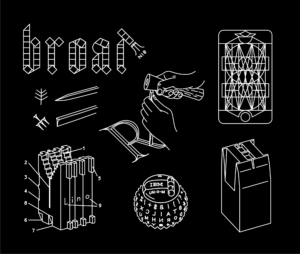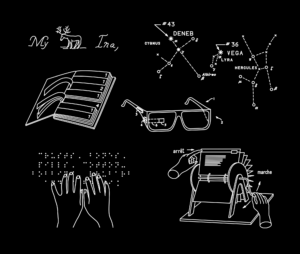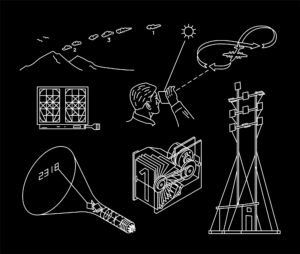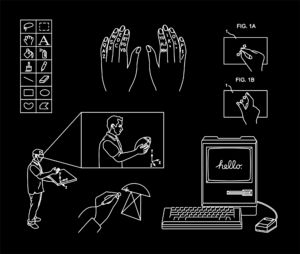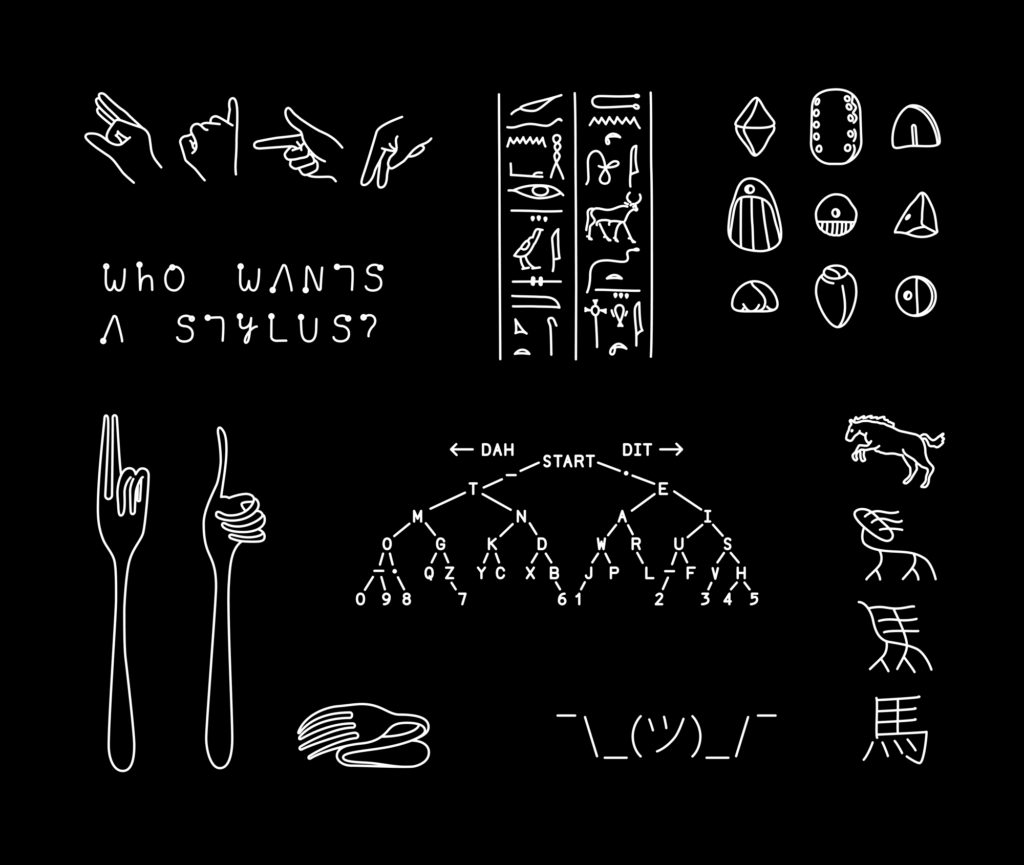
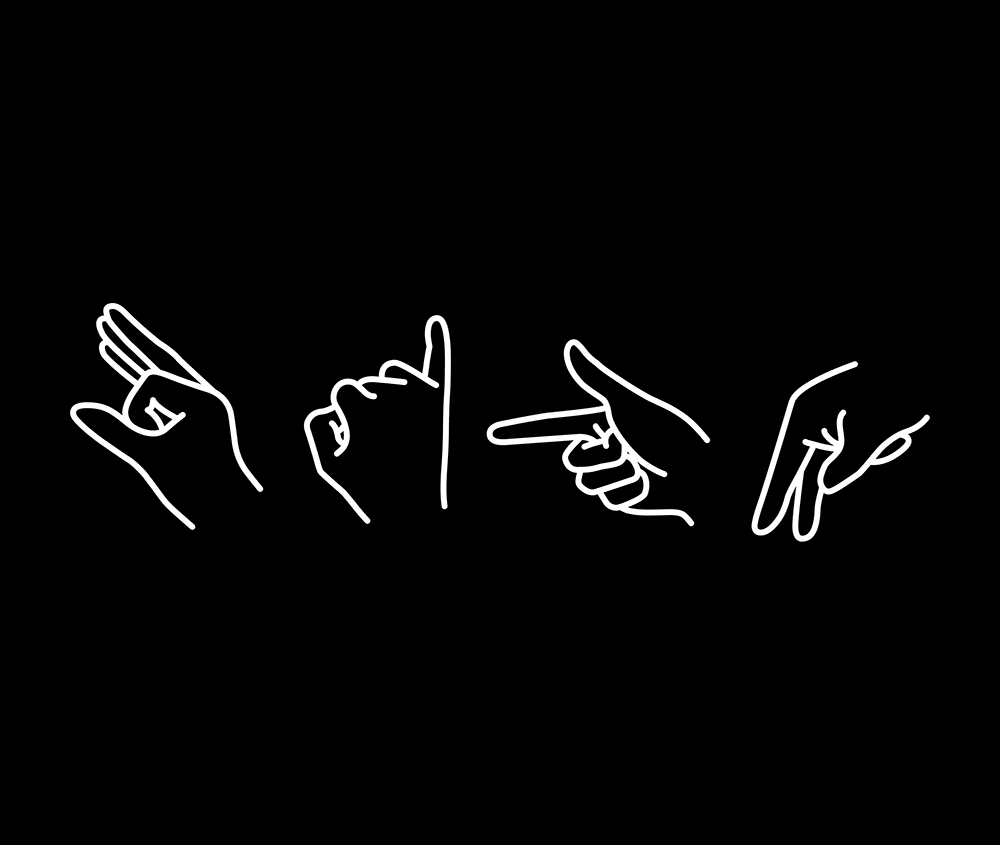
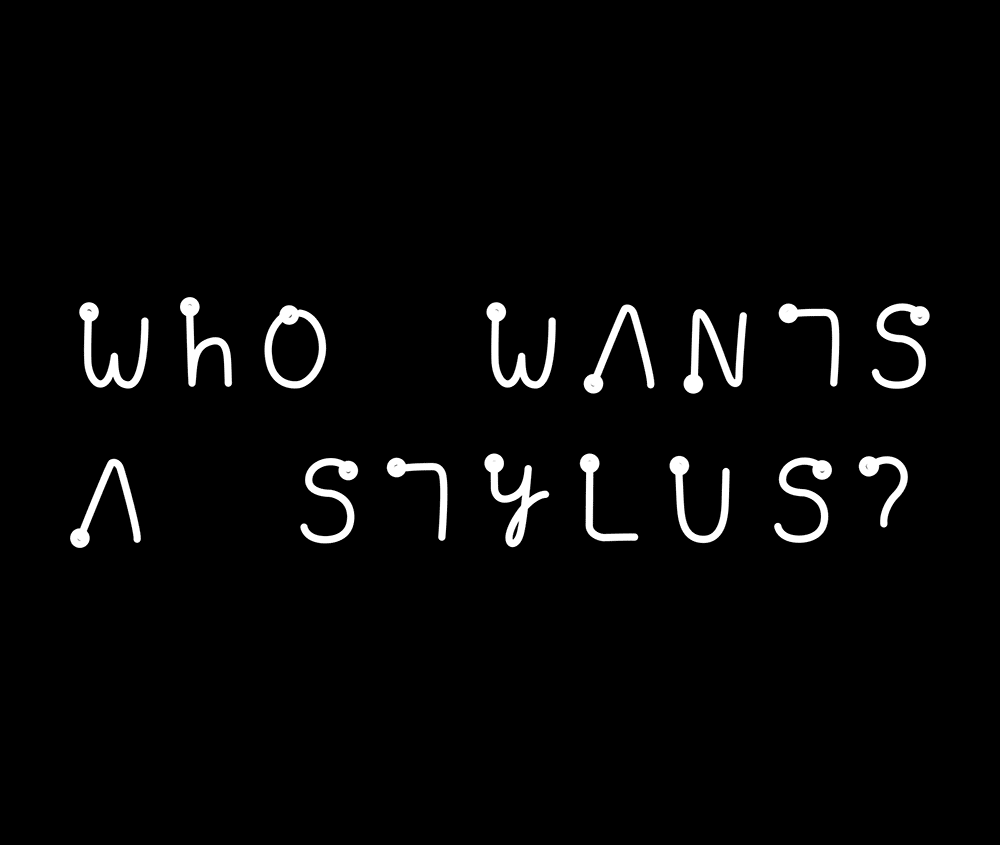
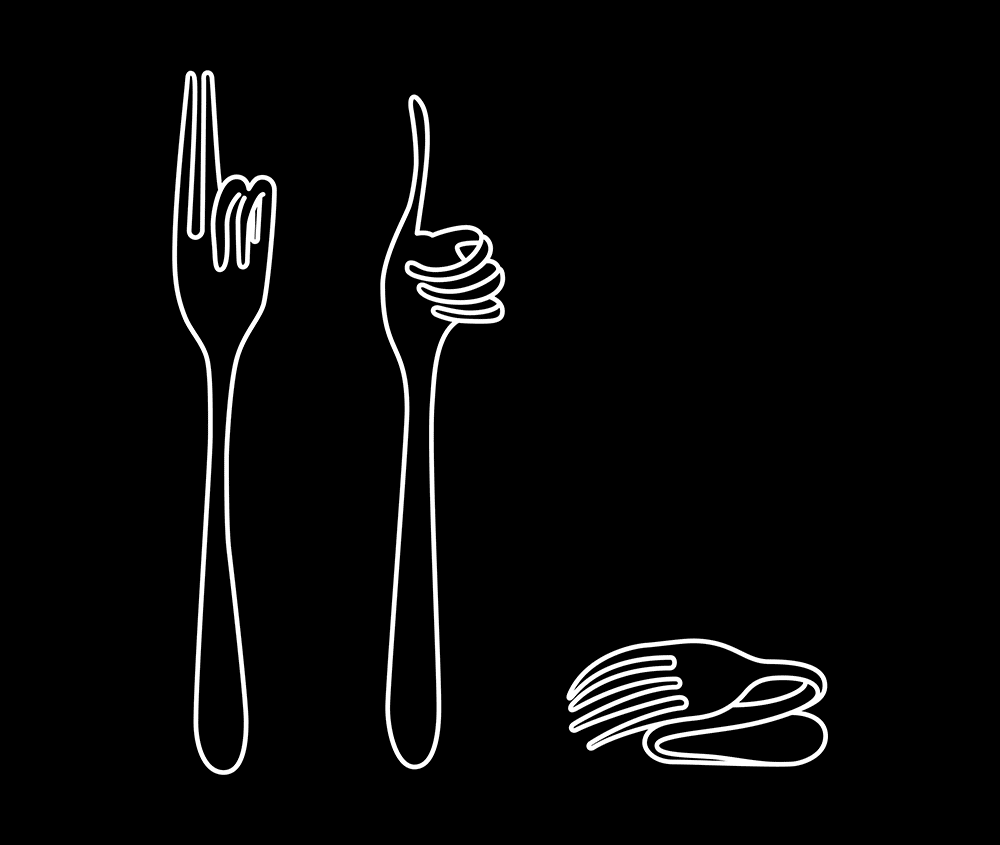
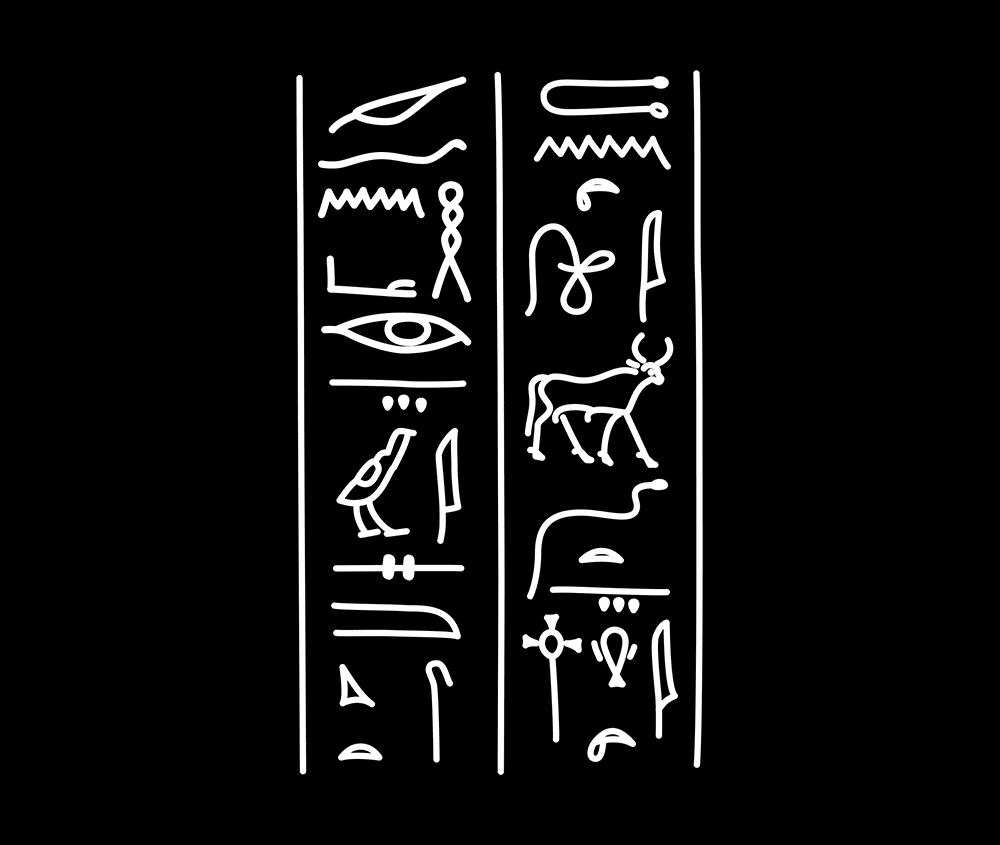
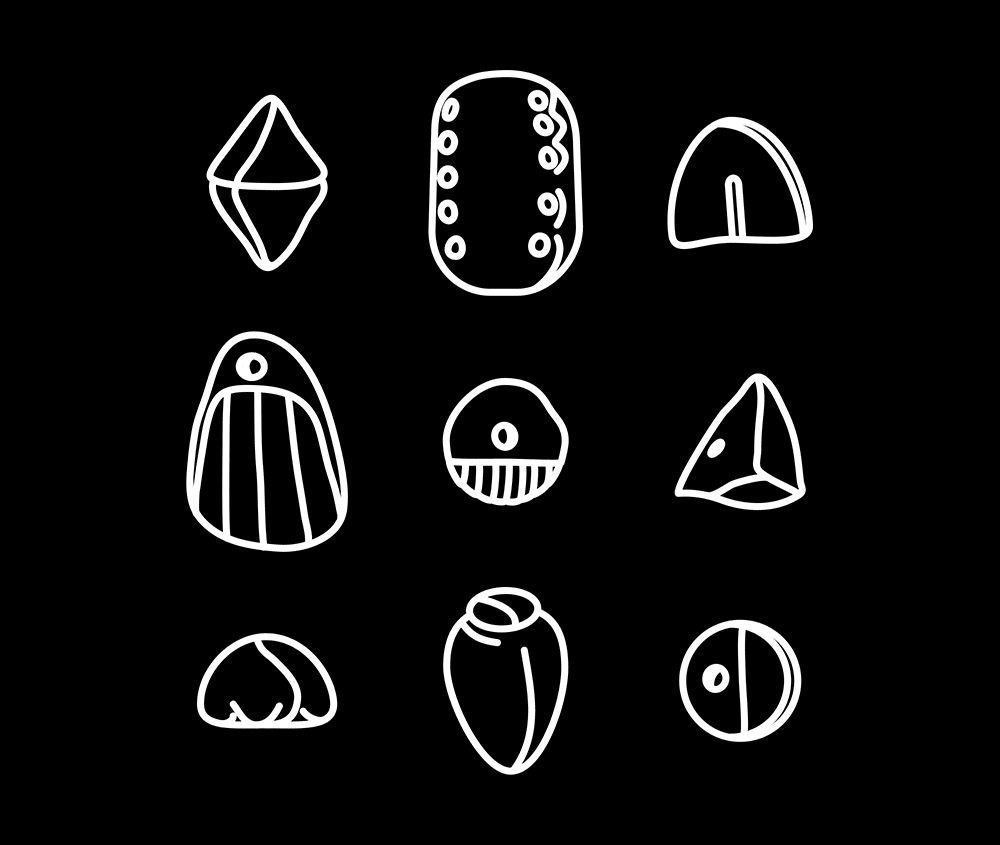
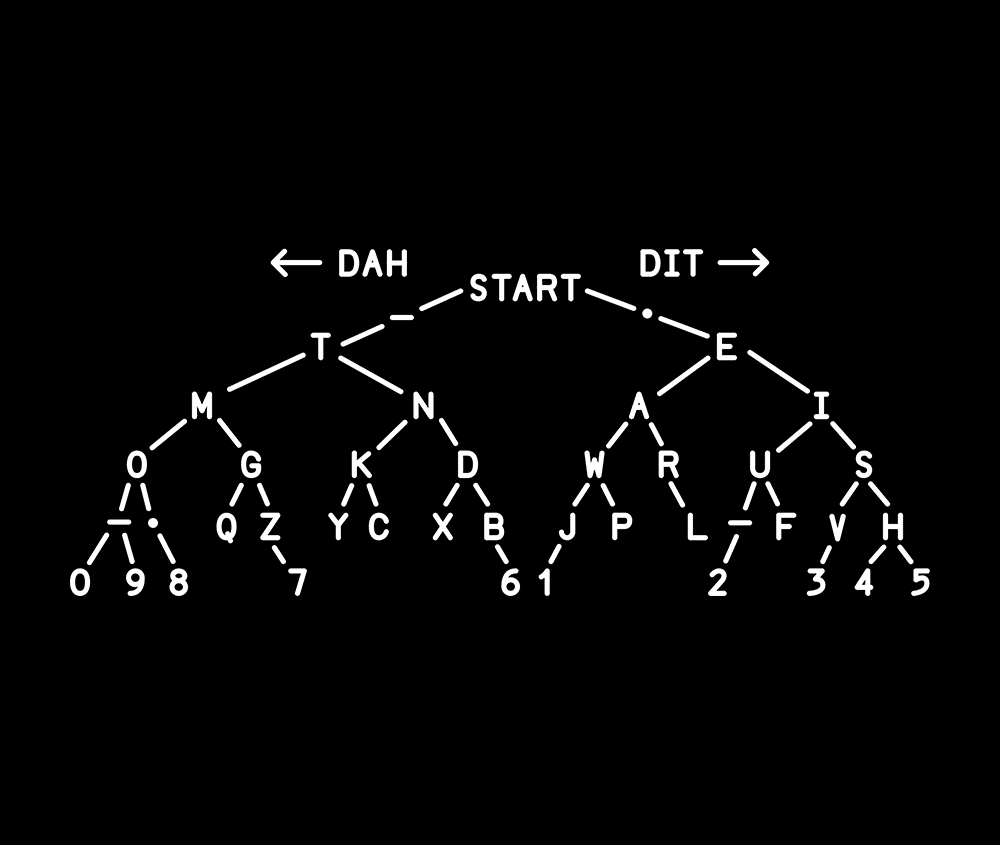
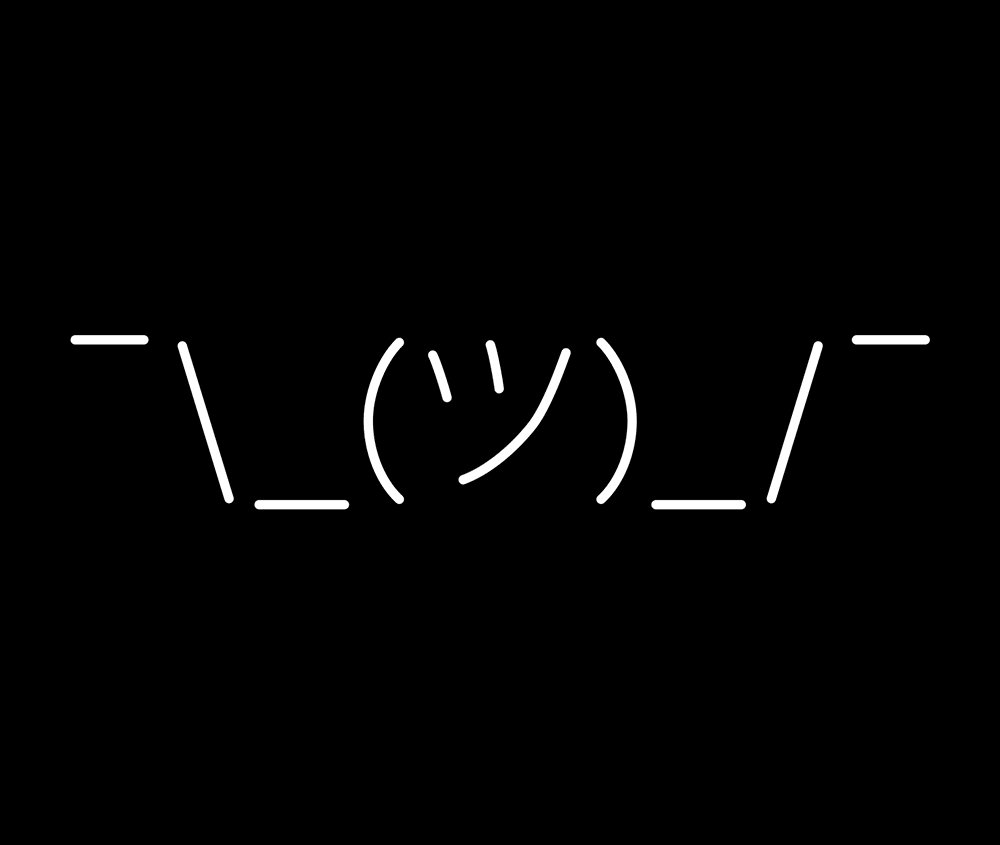
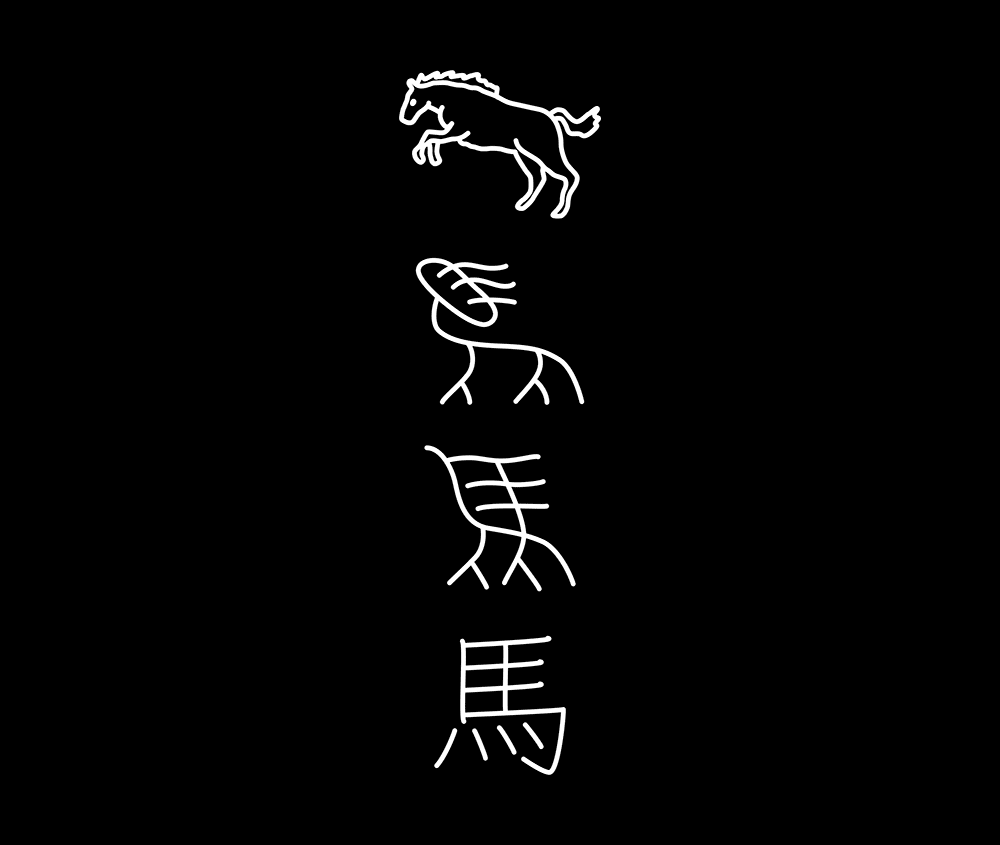
Jürg Lehni & Jenny Hirons, A Taxonomy of Communication, 2016
Sign Language
Hand Gestures from the American Sign Language, spelling out the word SIGN. American Sign Language (ASL) is the predominant sign language of Deaf communities in the United States and most of anglophone Canada. ASL is most closely related to French Sign Language (LSF).
Graffiti Alphabet
Graffiti is a single-stroke shorthand handwriting recognition system developed by Palm Inc. for use in PDAs based on the Palm OS. It was so similar to Xerox’ Unistrokes that it became the subject of a lawsuit from Xerox.
https://en.wikipedia.org/wiki/Graffiti_%28Palm_OS%29
Here, Graffiti spells out the sentence “WHO WANTS A STYLUS?”, quoting Steve Jobs’ dismissal of any stylus-based PDA / Smartphone at the introduction of the original iPhone at Macworld in 2007:
Talking Forks
Forchette Parlanti, Bruno Munari, 1958
Italian hand gestures, formed by forks
https://www.moma.org/collection/works/2980
https://www.tavoleadarte.it/eng/12_pos_munari.html
Hieroglyphs
Excerpt from the Sarcophagus of Ankhnesneferibre, Thebes, Egypt, 26th Dynasty, around 525 BC, on display at the British Museum in London.
Ankhnesneferibre was the last “God wife of Amun” before the Persian conquest of 535 BC. During the same time, she also held the office of God’s Wife of Amun, which was the highest office in the priesthood of the temple of Amun in Thebes.
Sumerian Clay Tokens
For 5000 years before the appearance of writing in Mesopotamia, these small clay objects in abstract shapes were used for counting agricultural and manufactured goods. As time went by, the ancient Mesopotamians realized that they needed a way to keep all the clay tokens securely together (to prevent loss, theft, etc), so they started putting multiple clay tokens into a large, hollow clay container which they then sealed up. However, once sealed, the problem of remembering how many tokens were inside the container arose. To solve this problem, the Mesopotamians started impressing pictures of the clay tokens on the surface of the clay container with a stylus.
Morse Code
Diagram explaining paths for each single letter between DAH (= dash, left) and DIT (= dot, right)
Shruggie
The shruggie or “smugshrug,” as it is sometimes called, is what’s known as a “kaomoji,” or “face mark” in Japanese. It’s similar to an emoji or emoticon, but it incorporates characters from the katakana alphabet, instead of underscores and carets, for a wider range of expression.It went viral in English when, after Kanye West shot down Taylor Swift in favor of Beyoncé during his infamous 2010 Video Music Awards interruption, he gave a little shrug with his hands outstretched in a slight acknowledgement of his own ridiculousness; the rap crew Travis Porter immediately tweeted, “Kanye shrug —> ¯\_(ツ)_/¯” as a crude representation of the gesture.
https://www.theawl.com/2014/05/the-life-and-times-of-%C2%AF_%E3%83%84_%C2%AF
SinoKorean Characters
The evolving of a drawing of a horse into its Sino-Korean character, while preserving one of its main features: the mane.
Source: Pictorial Sino-Korean Characters: Fun With Hancha, by Rev. Jacob ChangUi Kim, édit. Hollym International, Elizabeth (NewJersey)/Séoul, 1988.
